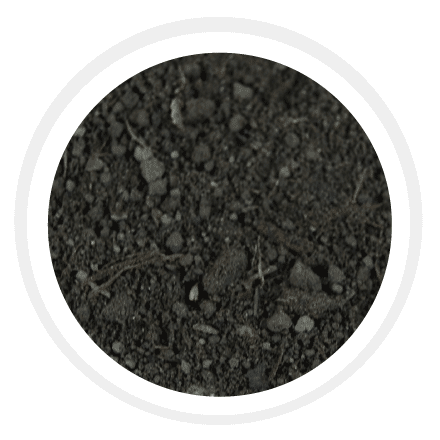Types of soil
1.Sandy Soil
Sandy soil is coarse in texture with large ,gritty particles .Like the name suggests, sandy soil is mostly made up of sand. Because of the fine grains, water drains easily through this soil and makes it stays pretty dry. It is an easier soil to dig with but it means any plants growing here will need to be well watered. It usually has less organic material in it so needs fertilizer to provide any plants with nutrients . Sandy soil tends to warm up quickly in the spring because of its light color and the fact that it does not hold much moisture. This can be advantageous for early planting but also means it can overheat and dry out in the summer. Sandy soil is usually formed by the breakdown or fragmentation of rocks like granite , limestone and quartz.
2.Loam Soil
Loam soil is known for its ideal balance of the three primarily soil particles: approximately 40% sandy, 40% silt and 20% clay. This balance gives loam a smooth crumby texture that is easy to work with. Loam is friable , meaning it crumbles easily when dry, making it easy to till or dig into. Loam soil has enough content to allow for good drainage, preventing water from pooling and reducing the risk of root rot. Despite its good drainage, loam also contains enough clay and silt to retain moisture, making it available to plants over a longer period compared to dandy soil. It is typically rich in nutrients and organic matter, making it highly fertile. loam soil generally has a neutral pH, which is ideal for most plants. It is neither too acidic nor too alkaline. Because of its balanced texture, loam is easy to work with, whether you are digging, planting or mixing in amendments like compost.
Clay soil is made up of very small fine particles. These particles are so tiny that they stick together easily, making the soil feel smooth and sticky when wet. Because of small particle size, clay is dense and heavy. It is difficult to work with , especially when wet, as it tends to compact easily. Clay soil holds water very well due to its compact structure. The tiny particles create small pores that trap water, leading to excellent moisture retention. While clay soil retain water, it drains poorly. Water tends to accumulate in clay, which can lead to waterlogging and a lack of oxygen around plant roots, potentially causing root rot. Clay soil has poor aeration and tends to warm up slowly in the spring because it retains moisture and its dense. Clay soil is challenging to work with, especially when its wet. It can be sticky and hard to till and when dry, it can be become very hard and difficult to break up.





Good efforts😊 well-done.
ReplyDelete🙌
DeleteWhich soil is good for planting potatoes
ReplyDeleteSandy Soil
DeleteGreat 😊
ReplyDeleteBut give us an examples of crops that can grow well in Sand, Loam and Clay soil..
Anyways, your writing style is engaging and you have insights on the topic. Keep up the good work!!!
Alright
DeleteVery creative
ReplyDeleteGood effort,,,,well done
ReplyDelete